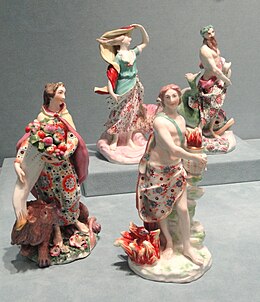nitrogen (N). phosphorus (P). and potassium (K . lncluded in various ratios in fertilizer (see essential elements. macronutrient. and micronutrient).
The classical elements typically refer to earth, water, air, fire, and (later) aether which were proposed to explain the nature and complexity of all matter in terms of simpler substances. Ancient cultures in Greece, Tibet, and India had similar lists which sometimes referred, in local languages, to "air" as "wind" and the fifth element as "void".
These different cultures and even individual philosophers had widely varying explanations concerning their attributes and how they related to observable phenomena as well as cosmology. Sometimes these theories overlapped with mythology and were personified in deities. Some of these interpretations included atomism (the idea of very small, indivisible portions of matter), but other interpretations considered the elements to be divisible into infinitely small pieces without changing their nature.
While the classification of the material world in ancient Indian, Hellenistic Egypt, and ancient Greece into air, earth, fire, and water was more philosophical, during the Middle Ages medieval scientists used practical, experimental observation to classify materials. In Europe, the ancient Greek concept, devised by Empedocles, evolved into the system of Aristotle and Hippocrates, who introduced systematic classification into the area, which evolved slightly into the medieval system, which for the first time in Europe became subject to experimental verification in the 1600s, during the Scientific Revolution.
Modern science does not support the classical elements as the material basis of the physical world. Atomic theory classifies atoms into more than a hundred chemical elements such as oxygen, iron, and mercury. These elements form chemical compounds and mixtures, and under different temperatures and pressures, these substances can adopt different states of matter. The most commonly observed states of solid, liquid, gas, and plasma share many attributes with the classical elements of earth, water, air, and fire, respectively, but these states are due to similar behavior of different types of atoms at similar energy levels, and not due to containing a certain type of atom or substance.





